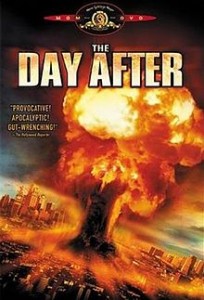Military Just Can’t Kick Its Afghanistan Habit, Picks Up Pace of Night Raids
The US military’s addiction to war in Afghanistan is now in its fourteenth year. Such a long addiction can’t just be ended in a weekend of going cold turkey. Much of the effort to end the war has been cosmetic and semantic. Although troop levels are now down dramatically from the peak of Obama’s surge, Obama’s tactic at the end of 2014 was to declare the war “over” while at the same time signing a secret order allowing for expanded activities by those troops remaining in the country.
The military has joined in Obama’s gamesmanship, taking as much of the war effort behind curtains of secrecy as it possibly can. In October, it suddenly classified information on Afghan troop capabilities and then in January it tried to expand that classification to nearly all information coming out of the war. While the military seems to have relented on at least some of that move, I haven’t yet seen SIGAR report on the information grudgingly given up after the classification was strongly criticized in Washington.
Two reports in the current news cycle highlight the military’s desperation in hanging onto as much combat activity in Afghanistan as it can. Yesterday, John Campbell, commander of US troops in Afghanistan, told the Senate Armed Services Committee that the current schedule for drawdown of troops from Afghanistan must be slowed:
The commander of U.S. forces in Afghanistan confirmed Thursday that he supports a slowing of the troop drawdown and slated pullback from bases in the country by the end of the year, as the White House reconsiders its plans.
Gen. John Campbell told the Senate Armed Services Committee that he has made those recommendations and they are now being considered by the joint staff and secretary of defense’s office.
It is hard to see this move as anything but an attempt to delay the inevitable total collapse of Afghan forces, just as Iraqi forces collapsed without US support. Consider how Campbell framed his testimony:
“This is their first fighting season on their own,” Campbell said, speaking of the Afghan forces the United States hopes will be able to secure the country against Taliban, Islamic extremists linked to the Islamic State, and drug lords.
Just like a junkie needing that next fix, Campbell tries to claim that just one more year of training will have those Afghan troops working perfectly:
A slower withdrawal time line could allow the forces to continue the train-advise — and-assist and the counterterror operations at more of the 21 bases it and coalition forces now use throughout the country.
This desperate plea for a slower US troop withdrawal and more time for training Afghan forces puts a much colder light on the sudden classification of Afghan troop capability. Even John McCain realizes that we are headed down the same path in Afghanistan as we saw in Iraq (but of course he used that make a dig at Obama while overlooking his own cheerleading of the ongoing clusterfuck):
“We are worried about it being done ‘just as we’ve done in Iraq,’” said Sen. John McCain, R-Ariz., mocking a statement by President Barack Obama last year that touted the proposed Afghanistan drawdown.
But the classification of Afghan troop capability is not the only front on which actions in Afghanistan have gone secret. We learn today from the New York Times (h/t The Biased Reporter) that the US is relying on new authority for night raids as part of its counterterror activities authorized under the Bilateral Security Agreement put into place once Ashraf Ghani assumed the presidency. Unlike the days of the Karzai presidency, the John Kerry-invented National Unity Government of Ghani and Abdullah not only doesn’t protest US night raids, it actively works with the US to hide all news of them:
The spike in raids is at odds with policy declarations in Washington, where the Obama administration has deemed the American role in the war essentially over. But the increase reflects the reality in Afghanistan, where fierce fighting in the past year killed record numbers of Afghan soldiers, police officers and civilians.
American and Afghan officials, who spoke on the condition of anonymity because they were discussing operations that are largely classified, said that American forces were playing direct combat roles in many of the raids and were not simply going along as advisers.
“We’ve been clear that counterterrorism operations remain a part of our mission in Afghanistan,” Rear Adm. John Kirby, the Pentagon press secretary, said on Thursday. “We’ve also been clear that we will conduct these operations in partnership with the Afghans to eliminate threats to our forces, our partners and our interests.”
The raids appear to have targeted a broad cross section of Islamist militants. They have hit both Qaeda and Taliban operatives, going beyond the narrow counterterrorism mission that Obama administration officials had said would continue after the formal end of American-led combat operations last December.
The gist of the Times article is that this uptick in raids is driven mostly by intelligence contained on a laptop magically captured by Afghan forces, but it is clear that US forces would have used any excuse they could find to justify this increase in death squad activity now that the Afghan government allows their return.
Postscript: Somehow, even though the laptop is supposed to have been from an al Qaeda operative, it is even claimed to have had information that helped target drones to kill Abdul Rauf Khadim. I’m pretty sure that by now getting his al Qaeda space checked off, Rauf has completed his terror bingo card showing sides on which he has played, even if posthumously.



